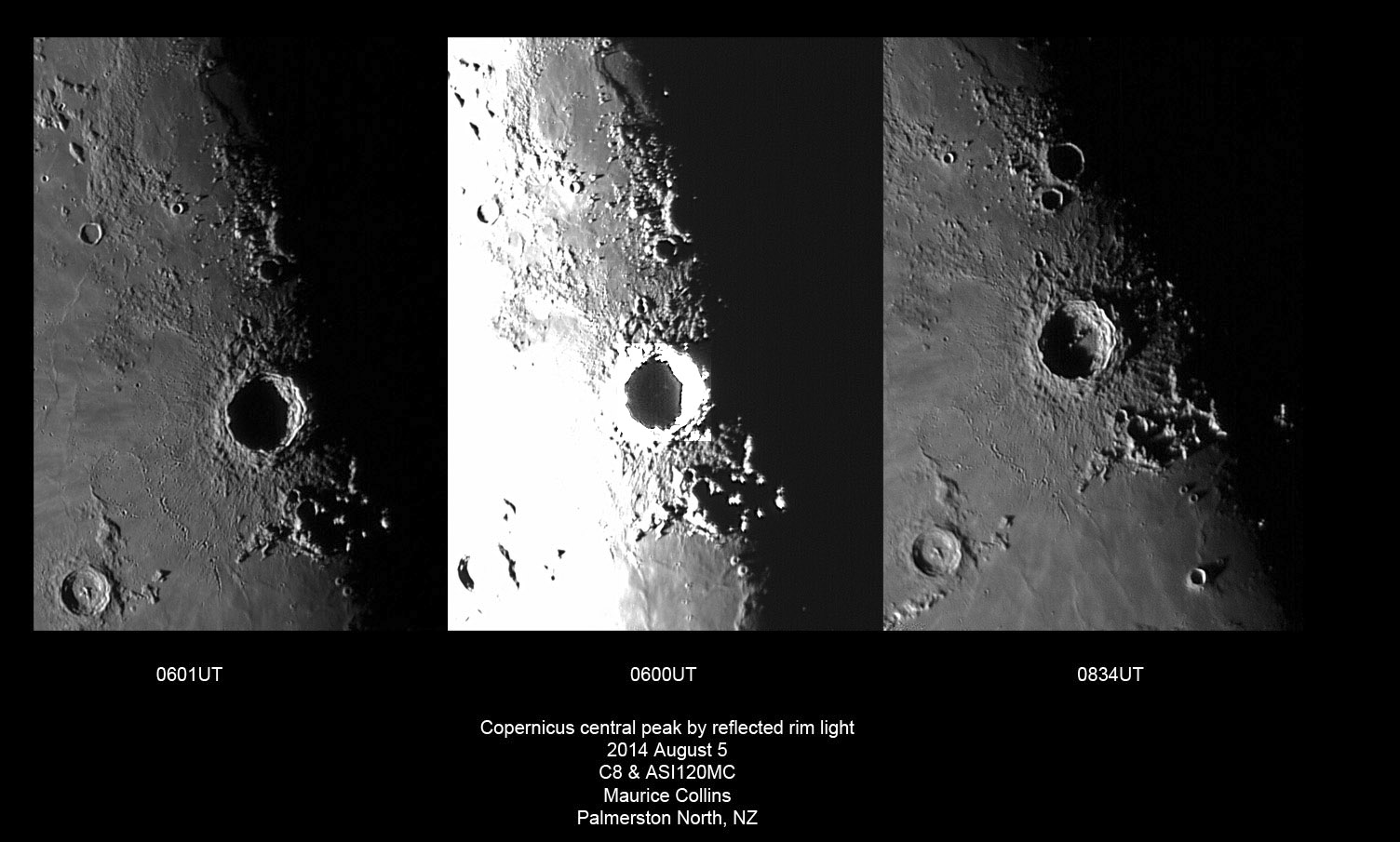August 6, 2014
Rimshine
image by Maurice Collins, New Zealand
We have talked before of the possibility of seeing features inside shadow-filled craters. Central peaks could be seen
due to sunlight reflected off an illuminated crater rim. The very sensitive Terrain Camera on Kaguya may have been
the first to do this, peering down into the always dark Shacketon crater at the South Pole. Maurice has demonstrated
here that the central peaks of Copernicus can similarly be imaged with nothing but rimshine. The peaks are only visible
with extreme enhancements (center) because the illumination is feeble, but two peaks are visible in the diagonal line
seen on the 0834UT image. A third, fainter peak is also weakly shown making a nearly equilateral triangle. This is not
a major peak, but a smaller clump of hills well seen on LRO (image inverted compared to this south up one). The
peak closest to the bright rim is brightest because of its increased illumination, and because it is the biggest peak.
Someday people living on the floor of Copernicus will have a magical hour or so of a faint glow from rimshine, with
Earthshine brightening the stygian darkness of the totally unilluminated dark phases.
Chuck Wood
Related Links
21st Century Atlas charts 17 & 22.
COMMENTS?
Click on this icon File:PostIcon.jpg at the upper right to post a comment.




